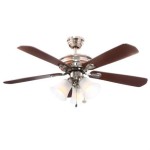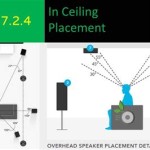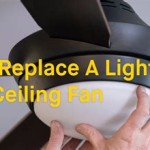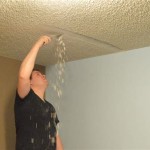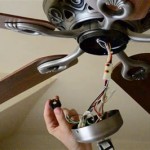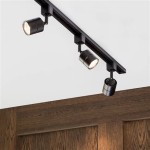Ceiling Fan in Light Fixture: Combining Style and Function
Integrating a ceiling fan within a light fixture creates a versatile and aesthetically pleasing solution for any room. This innovative design seamlessly blends the functionality of a fan with the illumination of a light fixture, offering a space-saving and stylish alternative to separate fixtures. While traditional fans and light fixtures occupy individual spaces, ceiling fans in light fixtures eliminate the need for multiple installations, streamlining the overall design and maximizing space efficiency.
These combined units are not just aesthetically pleasing but also offer practical advantages. They provide optimal temperature control, regulating airflow and adjusting room temperature for enhanced comfort. The ability to switch between fan and light modes allows users to customize the ambiance according to their needs, whether it’s creating a cool breeze during the summer or providing gentle illumination for a cozy evening.
Ceiling fans in light fixtures offer a range of styles and functionalities to suit different preferences and décor. From modern and minimalist to traditional and ornate, there are options to complement any room's aesthetic. They are available in various finishes, including brushed nickel, oil-rubbed bronze, and polished chrome, adding a touch of sophistication to any space.
Benefits of Ceiling Fans in Light Fixtures
Ceiling fans in light fixtures offer numerous advantages that make them an attractive option for homeowners and designers. Beyond their aesthetic appeal, they provide a range of benefits, including:
Convenience and Space Optimization
By combining two essential elements, ceiling fans in light fixtures eliminate the need for separate installations, saving valuable space and simplifying the overall design. This feature is particularly beneficial in smaller rooms where space is limited. The streamlined design and efficient use of space contribute to a cleaner and more uncluttered appearance.
Energy Efficiency
Ceiling fans in light fixtures promote energy efficiency by circulating air effectively, reducing the need for air conditioning or heating. This can lead to significant energy savings and lower utility bills, especially in warmer climates. The reduced reliance on HVAC systems contributes to a more sustainable and environmentally friendly approach to home management.
Versatility and Customization
These combined units provide versatility by allowing users to switch between fan and light modes, adjusting the ambiance according to their needs. Whether it's a cool breeze during the summer or gentle illumination for a cozy evening, users have complete control over the atmosphere of their space. The availability of various fan speeds and light intensities further enhances customization options, allowing for a personalized experience.
Aesthetic Appeal and Design Flexibility
Ceiling fans in light fixtures offer a wide range of styles and finishes to complement various interior design aesthetics. From modern and minimalist to traditional and ornate, there are options to match any room's décor. Their sleek design and integrated nature create a cohesive and visually appealing look, enhancing the overall aesthetic of the space.
Types and Features of Ceiling Fans in Light Fixtures
Ceiling fans in light fixtures come in various types and feature sets, catering to different needs and preferences. Some of the key factors to consider include:
Fan Blade Design and Material
Fan blades can be crafted from various materials, including wood, metal, and plastic. Each material offers distinct aesthetic qualities and performance characteristics. Wooden blades provide a classic look, while metal blades offer durability and a modern feel. The number of blades and their design impact the fan's efficiency and sound level.
Light Fixture Style and Type
Light fixtures integrated into ceiling fans come in a wide range of styles, from simple flush mounts to elaborate chandeliers. The choice of light fixture style should complement the overall décor of the room. The type of light fixture can include incandescent, fluorescent, LED, or halogen bulbs, offering different light output and energy efficiency levels.
Fan Speed and Control Features
Ceiling fans typically offer multiple speed settings, allowing users to adjust airflow according to the desired level of cooling. Some models include remote controls or wall-mounted switches for convenient operation. Advanced models may incorporate smart home integration for voice control and automated functions.
Installation and Maintenance
The installation process for ceiling fans in light fixtures is similar to traditional fans and light fixtures, requiring basic electrical knowledge and proper wiring. It's essential to consult an electrician for professional installation, particularly when dealing with electrical connections and wiring. Regular maintenance, including dusting the blades and cleaning the light fixture, ensures optimal performance and longevity.
Conclusion
Ceiling fans in light fixtures combine style and functionality, offering a space-saving and energy-efficient alternative to separate fixtures. Their versatility, aesthetic appeal, and design flexibility make them an excellent option for enhancing the comfort and ambiance of any room.

Bundle Ceiling Fan With Lighting Living Room Light Remote Control White Dimmable Cct Night Timer 30 Watt Led 3500lm

Ceiling Fan Light

52 Black Crystal Ceiling Fan Light Fixture Moooni Lighting

Ceiling Fan Light

5 Blades Bell Frost Glass Semi Flush Mount Rustic 31 W 3 Heads Bedroom Pull Chain Ceiling Fan Light Fixture In Black Clearhalo

Copper Canyon Rancher Ceiling Fan Rustic Lighting And Fans

42 36 Inches Crystal Ceiling Fan Silver Chandeli Urbanest

Replacing A Ceiling Fan Light With Regular Fixture Jlc Online

How To Replace A Ceiling Light With Fan Diy Installation

52 Led Ceiling Fan Light With 3 Blades Glass Shade Remote Control In Black


